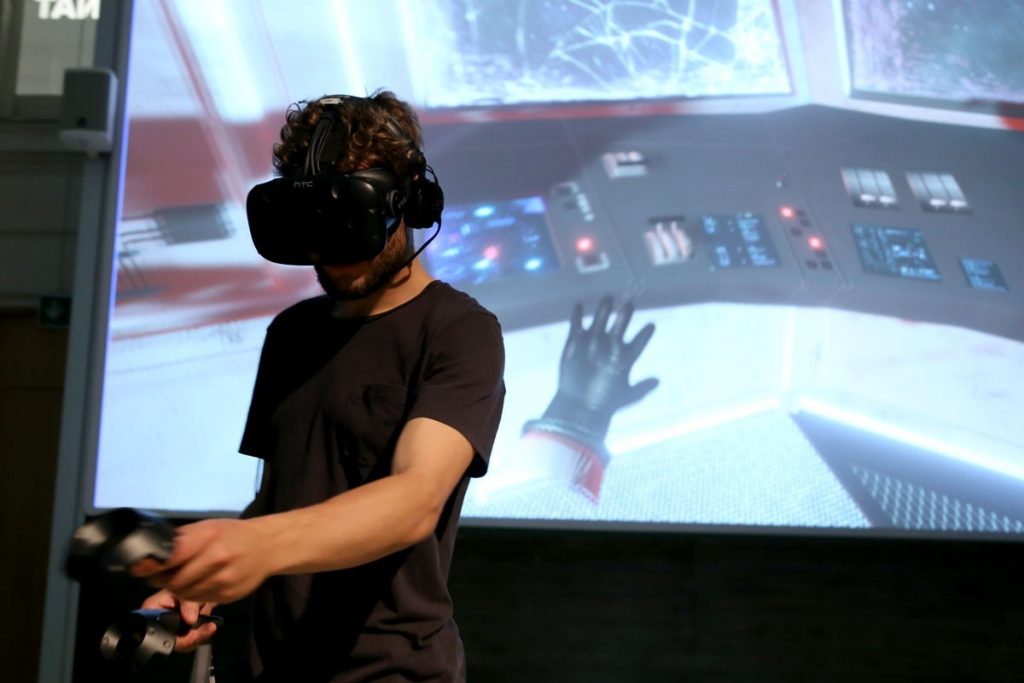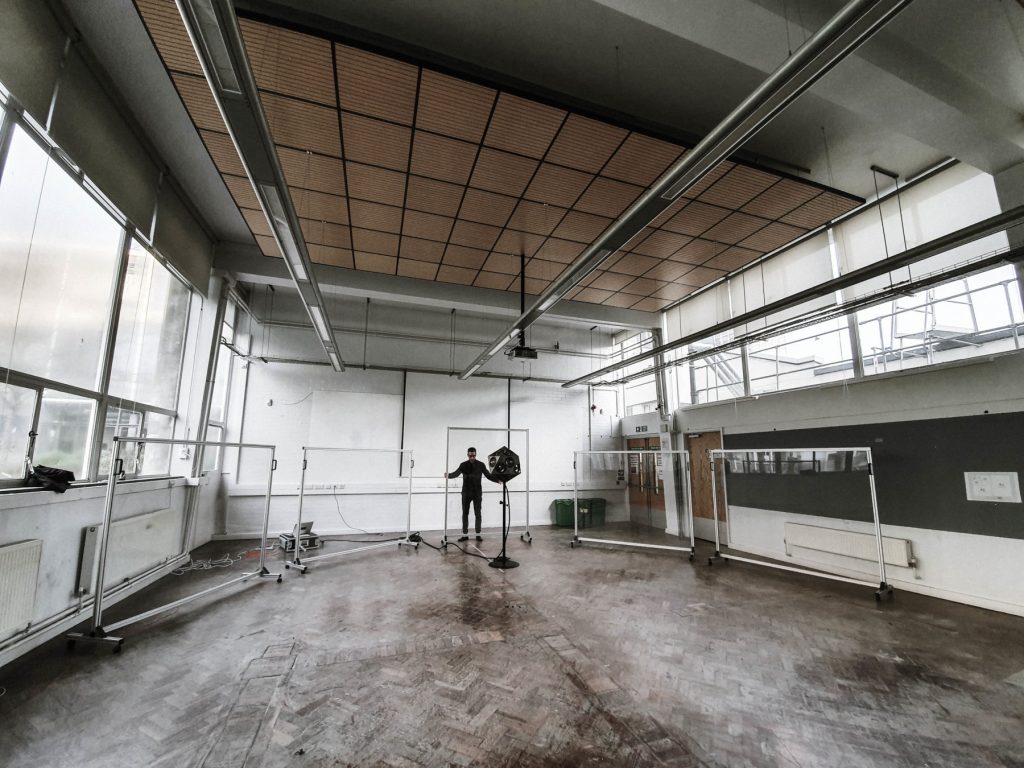New Media Doctoral (remote) Seminar
___________________________________________________________________
Following Aalto Universities protocol under the COVID-19 epidemic, New Media Doctoral seminar will be arranged remotely.
___________________________________________________________________
Thursday // 19.03.2020 // 16:25-19:30
Via Zoom.us (https://aalto.zoom.us/j/292357271
(Simply click on the link to join the seminar! It is advisable to download zoom before joining the meeting. For further instructions please see https://www.aalto.fi/en/services/zoom-quick-guide)
Participants can download the presentation slides (the presentations will be held with audio only!) 09:00 on the morning of the presentation.
___________________________________________________________________
Lead by Professor Lily Diaz the presentations for the March seminar are held by:
Constantinos Miltiadis // Gerriet K. Sharma
___________________________________________________________________
The Situation of Space in Contemporary Media Environments
– two part talk by Constantinos Miltiadis and invited guest Gerriet K. Sharma
Virtual reality and spatial audio technologies bring about a new paradigm in the fields of architecture and music. Works developed in these media produce experiences beyond what is perceivable in the physical world, extending therefore our capacities to design/compose as well as our sensibilities for spatial and temporal perception. By operating in the spatiotemporal domain, these new media, question our disciplinary understandings of space and time as well as their aesthetics, requiring an altogether new post-disciplinary conception of design/composition and experience.
The imperative for a new shared paradigm is even more prevalent in the so called “immersive media.” The production of spaces has become the modus operandi for the creation of artificial worlds and sound designs for concerts, VR, cinema and event culture – motivating an industry for hardware and software solutions. However, a closer look at the use of the term “space” reveals an astonishing inconsistency regarding contextualization, meaning and occupation.
Within this problematic, the aim of this research is the conception of a common space of the perception of spatiotemporal phenomena – a domain that we call the Shared Perceptual Space (SPS). Eventually, we ask whether post-disciplinary and artistic research, drawing from multiple disciplines from mathematics to musicology, architecture and philosophy, can construct a SPS as a common platform for the understanding of spatiotemporal phenomena and as aesthetic strategy for the orchestration of time and space.
Constantinos Miltiades
_________________________________________________________________
Space-Writing
Within Architecture’s Expanded Field
Space, as the substrate that conditions design and architecture is often taken for granted. Through a brief archeology of the evolution of spatial concepts from Greek mathematics through Renaissance perspective and 20th century physics, this talk intends to present how design-space is a culturally embedded “ideology” that adheres more to tradition rather than to any current scientific theory. Contemporary space-making media however can allow for us to experiment with and explore perceivable spaces beyond the traditions of design, as well as of what is constructible in physical reality, requiring thus a new set of conventions for engagement with space. Akin to writing spaces rather than designing in space, “choropoietic media” from drawing to videogames, VR and spatial audio, challenge us in considering an “expanded field” of architecture and spatial praxis, while providing vehicles for uncovering latent spectra of aesthetic experience.
Constantinos Miltiadis (studioany.com/)
Constantinos Miltiadis is a transdisciplinary architect, whose research and practice focus on virtual spatiotemporal environments, as a means of expanding the scope of architecture and its aesthetics. He has studied architecture at NTU-Athens, at the Chair for Computer Aided Architectural Design of ETH Zurich, and pursued studies in computer music at the Institute of Electronic Music of Kunst Uni Graz. His work has been presented in exhibitions, seminars, published in academic conferences as well as by international press, and received awards in international competitions. He has taught creative programming and experimental computation in academic contexts, as well as in conferences and art festivals. In addition, he was founder and curator of the “IAM Open Lectures” and co-founder of “Tabletalks on Architecture” as well as of the experimental electronic music event series . Between 2015 and 2019 he has been assistant professor at the Institute of Architecture and Media of TU Graz, while currently he is a doctoral student between the departments of Design and Architecture at Aalto ARTS, part of the Experience Platform.
_________________________________________________________________
Spatial Aesthetics
in Auditive Media Composition
In the cases both of music and of science, detachment involved the use of mechanical aids: scientic instruments helped discover a world, musical instruments to build one (D. Burrows)
We as composers and sound artists have never confronted a machine of the collective, networked, and externally defined media perception design as we experience it today. So what do we share with our audience, the engineers and scientists working on perceptions in media spaces, and how can we still detect potential for aesthetic experiences and make them useful for the acoustic arts? It seems unavoidable that this question causes us to fall back on our ears and the aesthetic reflection of what is experienced and experienceable in situ. Spatialization is the synthesis of spaces and spatial properties of sounds for audiences using numerous loudspeakers. Although one of the most important developments in music within the past century it is still an area of confusion and fundamentally different opinions between researchers, sound engineers, composers, and audiences. Great advantages in computer and audio technology have not necessarily yet led to similarly greater artistic advances in spatialization strategies and concepts within the past decades when compared with pioneering electro-acoustic music in the 1950s, in which visions of sculptural sound phenomena from the 1930s were firstly created and publicly performed. Moreover, as spatial computer music matures and consolidates within institutions and organizations, it is increasingly involving 3D audio systems which can create auditory virtual environments (AVEs). Quite likely in the very near future AVEs will be part of many people’s everyday life, e.g. in cars, working spaces, intelligent homes, concert halls and computer games. The emerging general question is, who creates these ‘virtual’ environments with which intention and how can music, sound art and sound design aesthetically contribute to this reality with their own strategies?
Gerriet K. Sharma (gksh.net)
Gerriet K. Sharma is a composer and sound artist. He studied Media Art at the Academy of Media Arts Cologne and composition/computer music at the University of Music and Performing Arts Graz. In 2016 he completed his doctorate at the scientific-artistic doctoral school Graz. His thesis is titled “Composing Sculptural Sound Phenomena in Computer Music”. Within the last 15 years he was deeply involved in spatialization of electroacoustic compositions in Ambisonics and Wave-Field Synthesis and transformation into 3D-soundsculptures. From 2009 to 2015 he was curator of “signale-graz” concert series for electroacoustic music, algorithmic composition, radio art and performance at the MUMUTH Graz. His works were presented and premiered at festivals in Europe and abroad. Scholarships by the German Academic Exchange Programme (DAAD) in 2007 and 2009. In 2008 he was awarded with the German Sound Art Award. In 2007 and 2010 he was Artist in Residence at Pact Zollverein Essen working on his concept of sculptural sound projection and formation. Within his Residency at the Institute of Musicology Wuerzburg 2011 – 2013 he conceived and established the Atelier for Sound Research. In spring 2014 he was composer in residence at ZKM Karlsruhe/Germany. 2015 – 2018 he was senior researcher and composer within the three year artistic research project “Orchestrating Space by Icosahedral Loudspeaker” (OSIL) funded by the Austrian Science Fund (FWF). He had been appointed as DAAD Edgar Varèse guest-professor at Electronic Music Studio, Audio communication (AK), TU Berlin for WS 2017/18. In 2019/20 he is visiting professor (Music and Technology) at IKG DART doctorate school Madrid. Publications in international journals and books on spatial practices and sound. “Aural Sculpturality. Spatio-temporal Phenomena within Auditive Media Techniques” was published by ZKM in 2019, his text “Surrounded by Immersion – Means of Post-Democratic Warfare” was released in the book Ultra Black of Music by Mille Plateaux in March 2020. He lives in Berlin.
Constantinos and Gerriet are founding members of the Special Interest Group on “Spatial Aesthetics and Artificial Environments” (2019) as part of the Society for Artistic Research (SAR).


